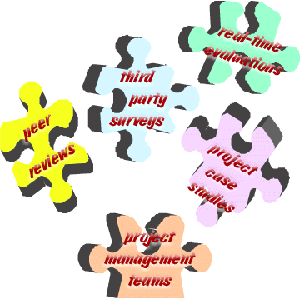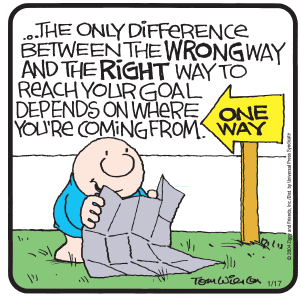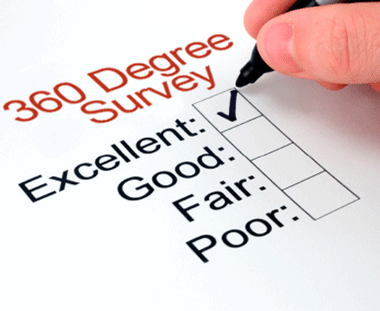After the event … moving things forward
Congratulations for finishing up your latest event! I’ll bet it was non-stop activity right up to the end, including your manager’s last-minute change just to test your last nerve. But before that well-deserved rest you’re about to take, I hope you’re also asking yourself: “Now what?”
The bad news: There’s more work to do! The good news: What you do afterwards can have a profound effect on the outcome of your event. Post-event activity can take many forms depending on what you’re trying to accomplish and what’s helpful, meaningful to those involved. It’s also where you can play a vital role to keep information and conversations moving forward through some of the following ideas and examples.

A good analogy to our role in this process reminds me of a meeting I produced using a navy pilot to deliver the keynote speech and training sessions, and how real-life American heroes can engage audiences. It showcased The U.S. Navy’s TOPGUN Program (as seen in the movie Top Gun for you movie-goers out there) to showcase how fighter pilots use discipline and precision, from their flight exercises through post-flight evaluation process, to increase flight crew readiness and combat capabilities over time.
Our post-event role doesn’t require quite that much precision. Just ask yourself some questions to get started: What did I commit to in my pre-planning process? What should I measure? What information do I carry forward? What will help maintain momentum and energy levels? This may require taking some reflective time on your part to help you absorb and recognize what your audience experienced, but it’s worth it to reach that firm list of “lessons learned” and “next steps” of activities that: Acknowledge, summarize, measure, and report.
Acknowledge.

Acknowledge those who helped make it memorable: A “thanks” to attendees for their active participation; the organizers for their last-minute attention to detail; your presenters’ time and presence. The formats may also vary: A hand-written note, an e-greeting, a celebratory lunch for your planning team. It’s those small gestures of appreciation that can turn a good experience to a great one and help carry new relationships and conversations forward.
Summarize.

Capturing the mood and activities afterwards through a fun summary with plenty of pictures is a valuable service you provide, not to mention a great engagement builder. It gives a framework and point of reference for those who couldn’t make it. It also gives your entire organization an opportunity to peek in and see how you’ve used an event to set goals, celebrate your accomplishments, and drive your mission and conversations. It just takes some thinking ahead on what and how to capture those key event elements, and what might bring them to life. Does it include a Vimeo link to a presenter’s video? Maybe it’s a link to a popular social media tool that sparks chatter on a specific topic. What moments and emotions could best capture its purpose?
Measure.

Everything we do requires some level of evaluation afterwards to make sure it’s working the way it needs to, even if it’s a brief post-event survey. This holds true with activities like events given the sheer time and resources we invest towards them, where measurement just makes good business sense to include. It helps you set and maintain expectations and parameters throughout the many moving components of you event, and you’ll shine afterwards by showing your strategic side when reporting your findings.

The key is; What and how much do you measure? There are literally hundreds of angles from which you can dissect and evaluate an event’s “success”. You may benefit by using a comprehensive framework like MPI’s Business Value of Meetings Toolkit. Or maybe a simpler framework like this can suffice.
- Define your success – Did your event deliver? Reflect on its overall purpose and activities and whether you accomplished it through your ROI hard dollar investment as well as its social return on engagement (ROE) elements. Did it reinforce an important organizational effort or value? What was participation like in terms of the types and volumes of questions? Did your suppliers deliver on time and budget? How well did your planning team work together?
- Define your contributors – Including a range of feedback – attendees, leaders, presenters, your event planning team – provides a more in-depth evaluation from different angles. Actively asking others’ opinions also shows that you care, so it’s an opportunity in the process to support broader engagement goals by looking, reaching beyond the event as more than a completed tactic.
- Define your process – Finding the right balance of post-event evaluation measures includes having a mix of quantitative and qualitative questions, or “rate and “”write”, as well as how you ask those questions to get at the heart of what you’re trying to learn: The “What did you think?” plus the “Why?”. It includes the timing and the delivery method you select to gather this feedback as well. Is it hard copies? Zoomerang? An in-person debrief? Some of these considerations will help you to manage the quality and depth of the information people provide you.
Report.
Show off what you’ve learned. Maybe shout it, if it’s really positive. But even if the results are less flattering than what you’d hoped, effective measurement is partly about the process itself. Either way, you’ll show your value by confidently reporting, acknowledging, and then using those findings in some way. Maybe it’s the etchings of a needs assessment for your next event, or some other post-communication that happens as a result of this information?
We have a dual opportunity as event planners and as strategic communicators. There’s great accomplishment in helping others experience a great event, and in knowing that we can impact broader communication and engagement levels by facilitating the important activities that follow. It never happens perfectly or even smoothly for that matter, but we can help make these activities happen, showing that they’re vital emotional and financial components that help keep post-event information and conversations moving forward.

